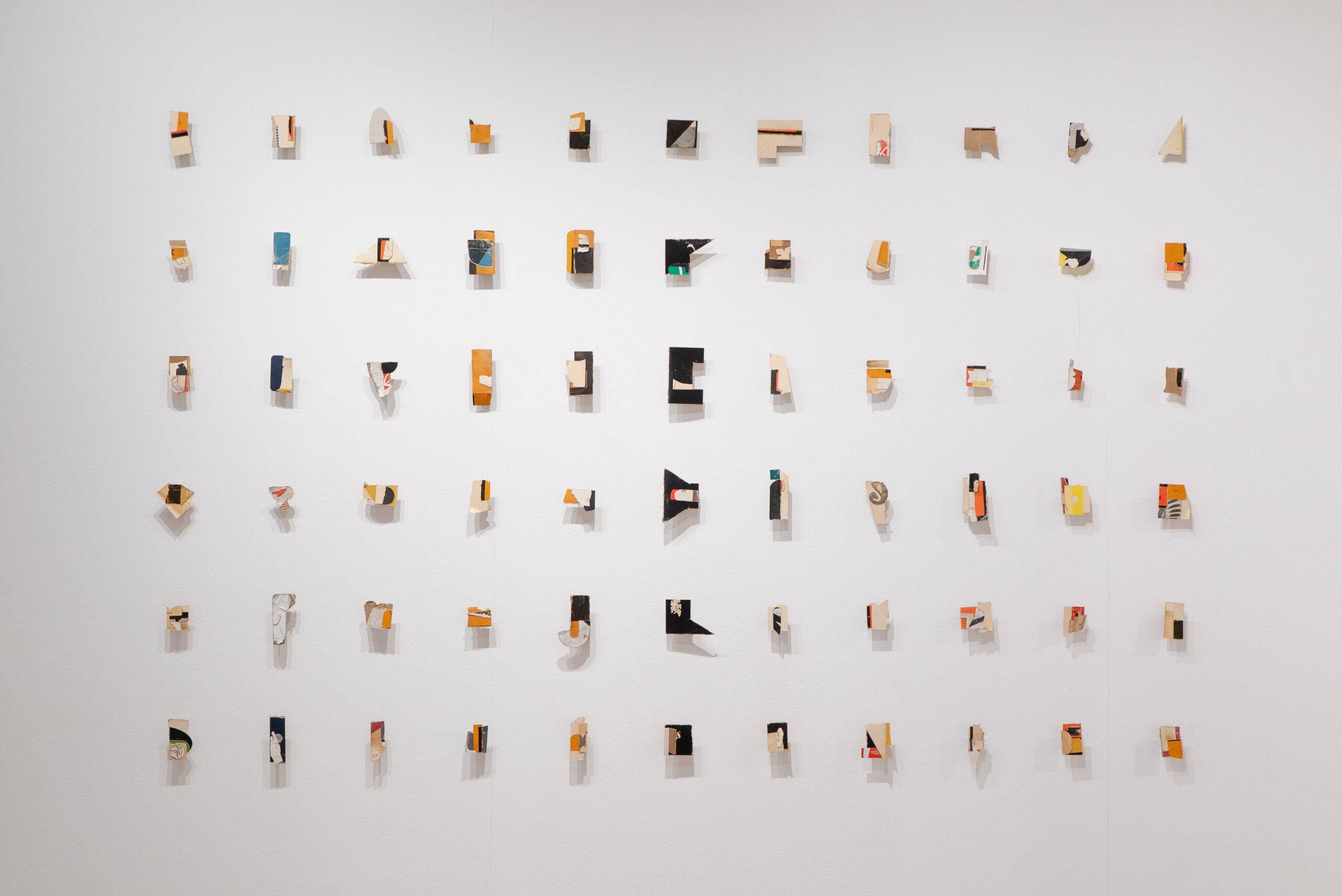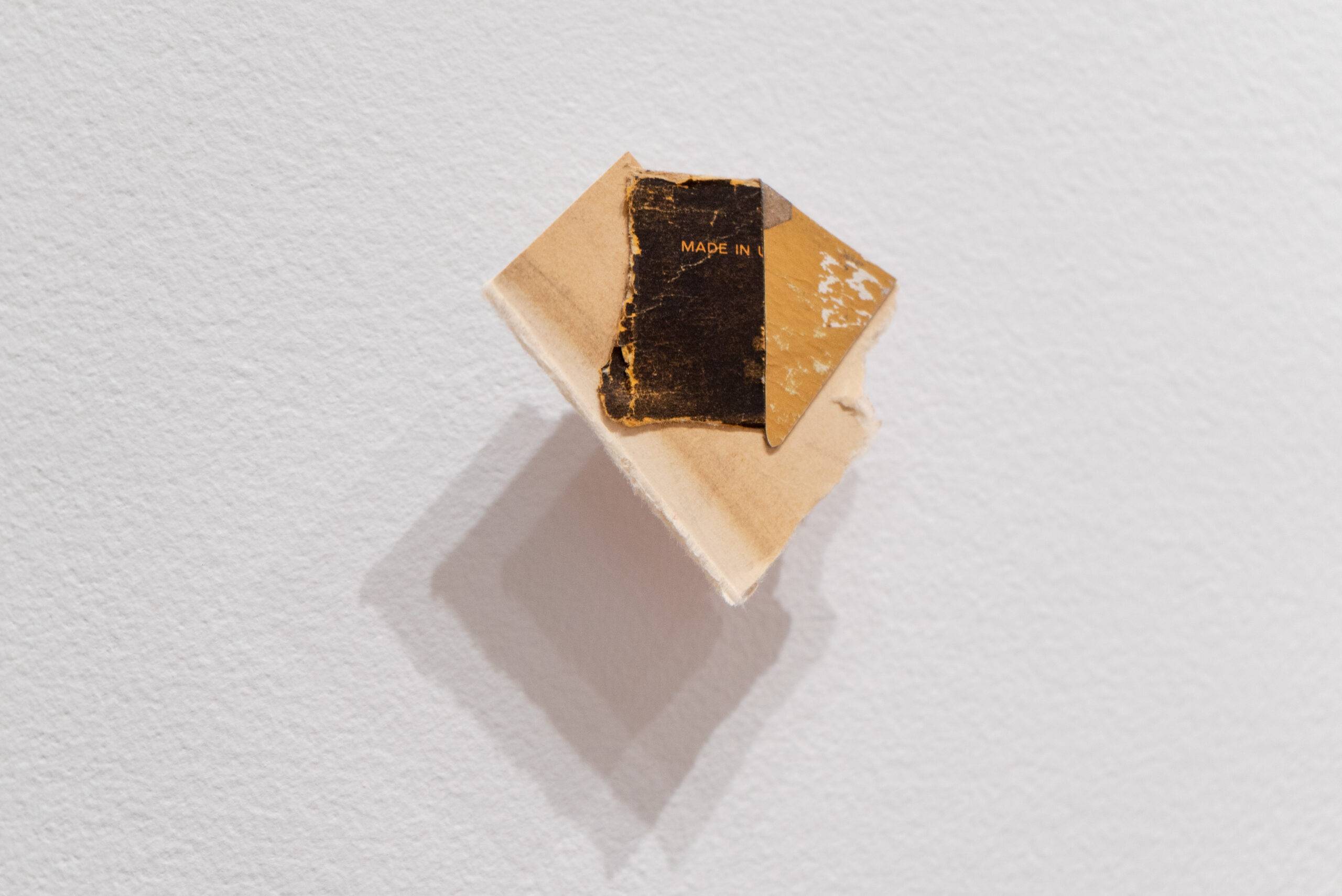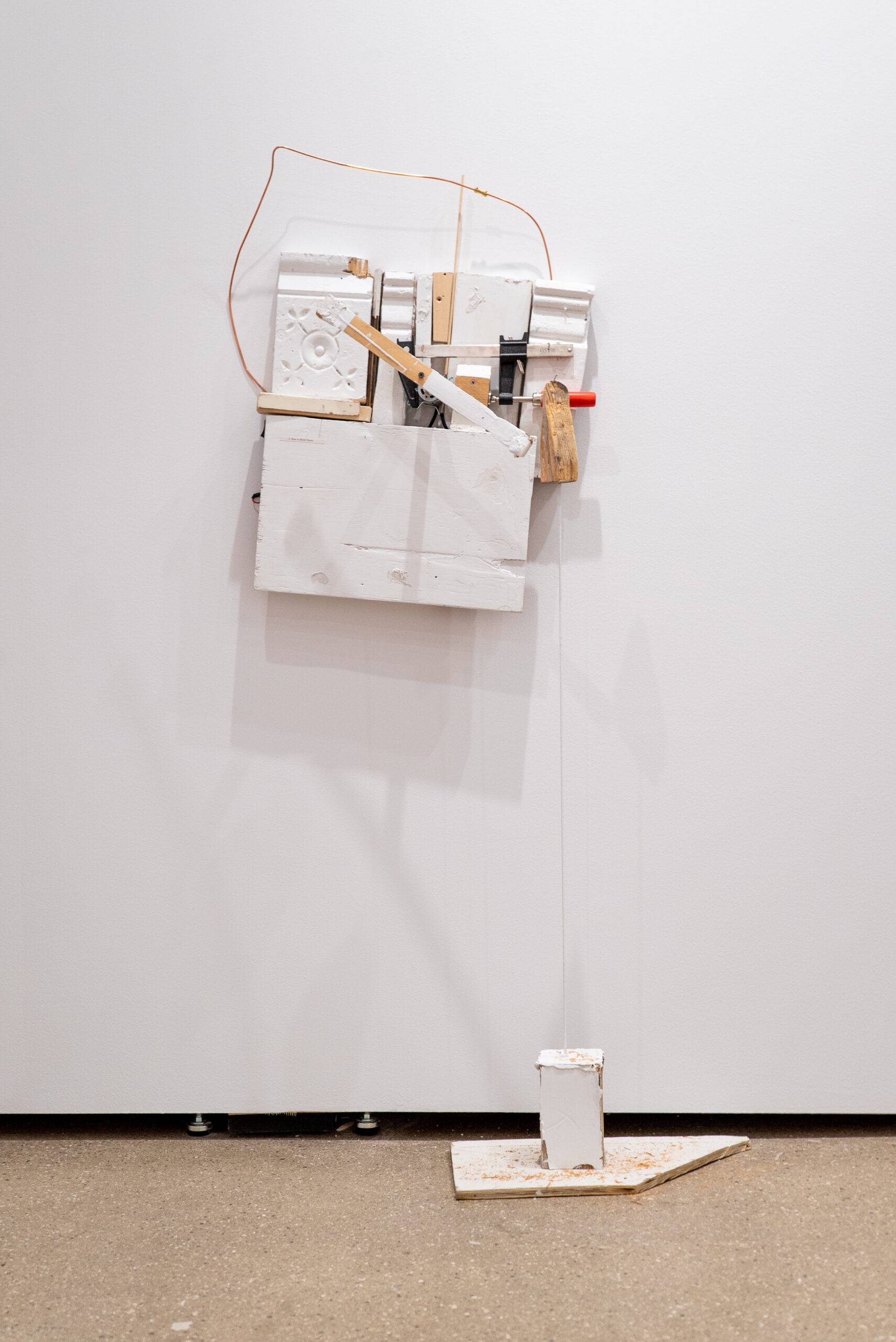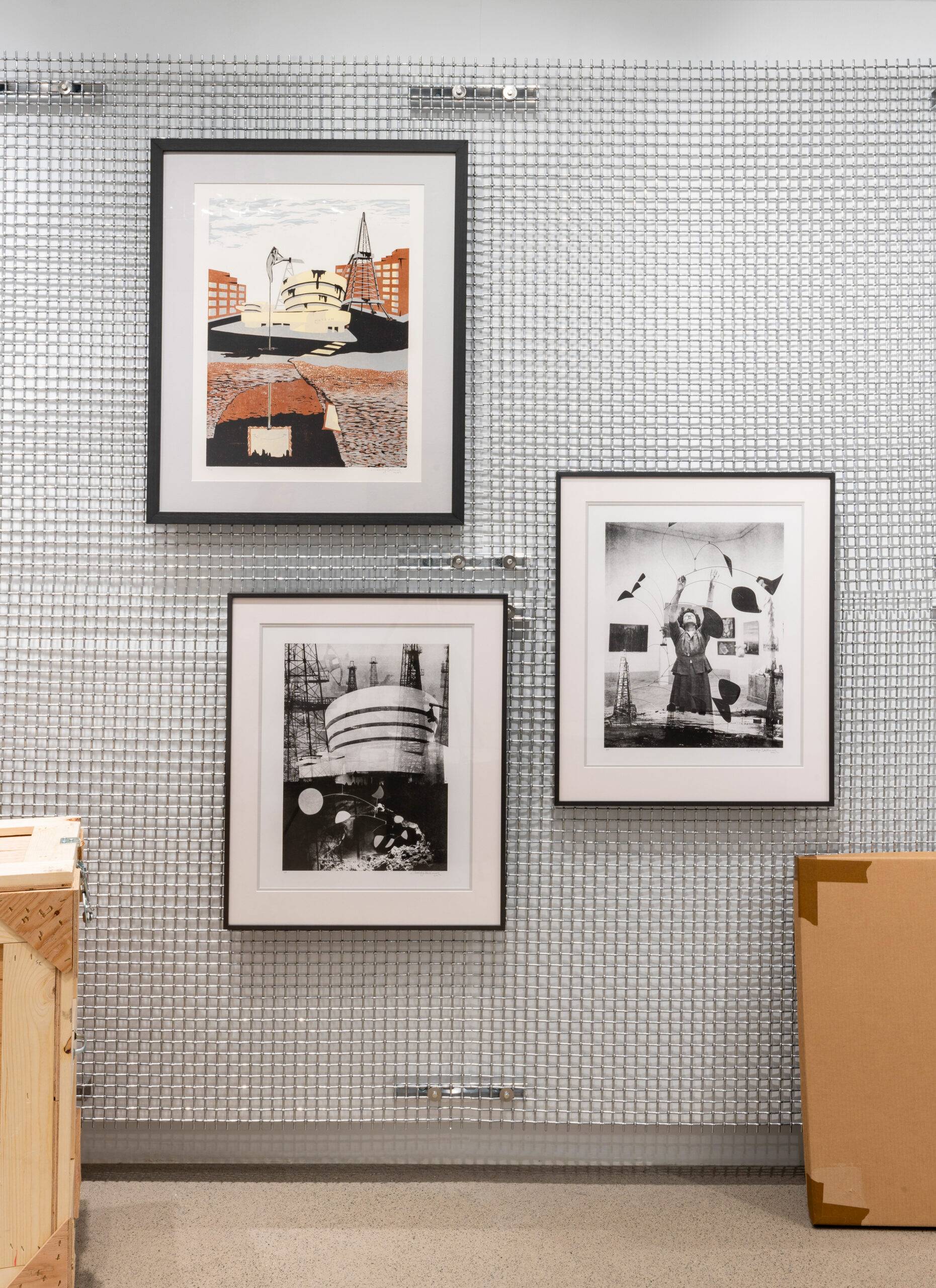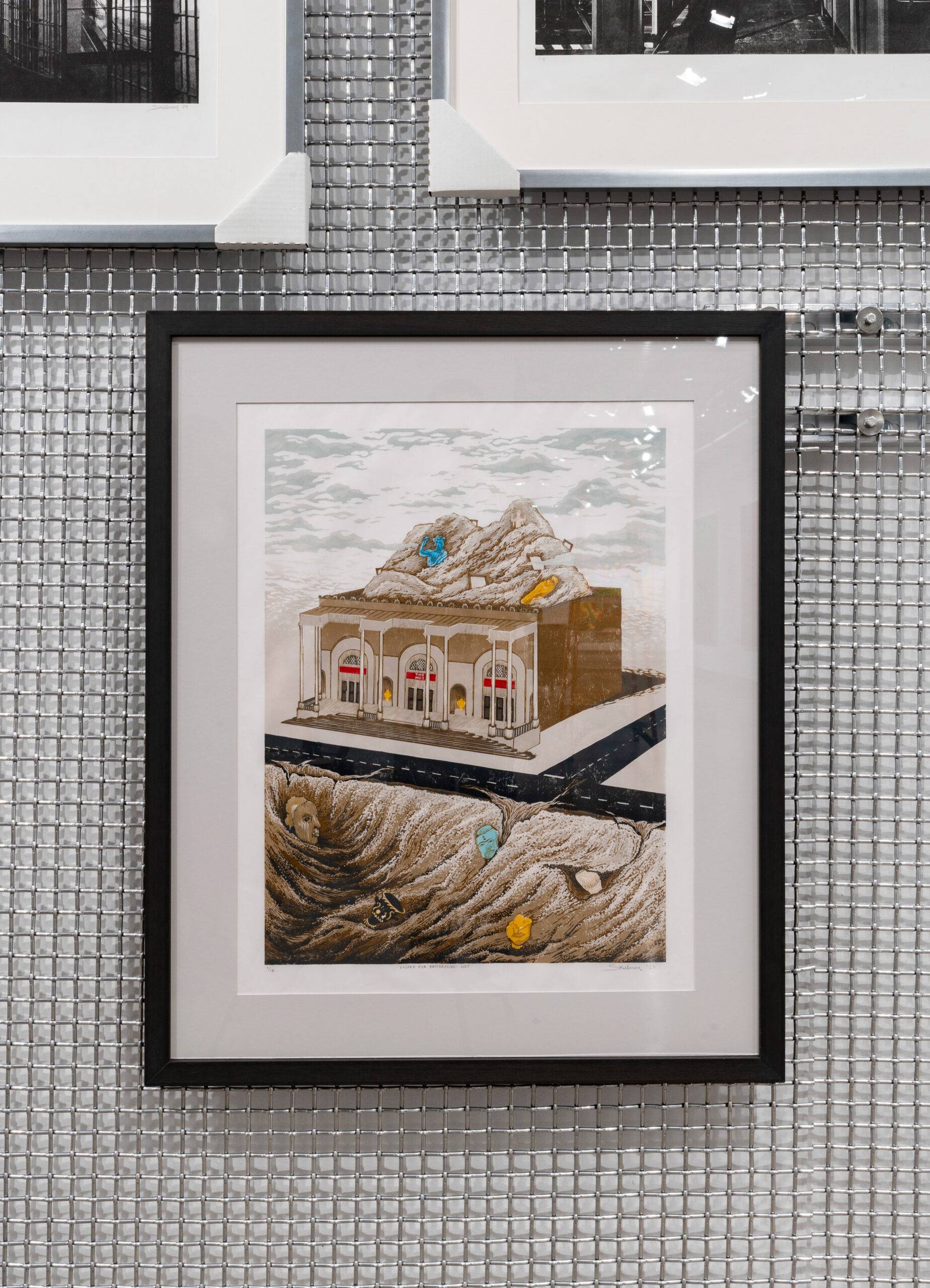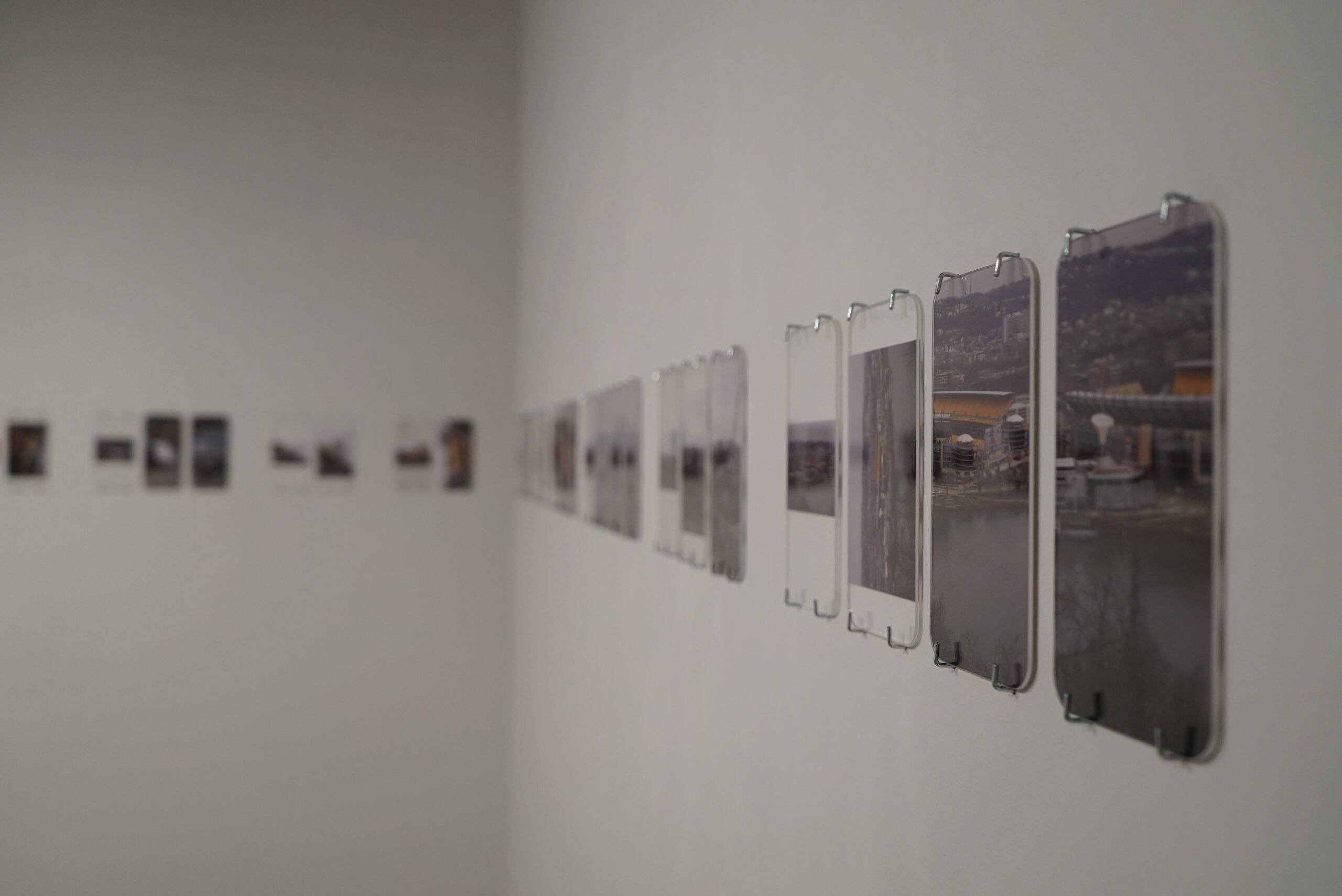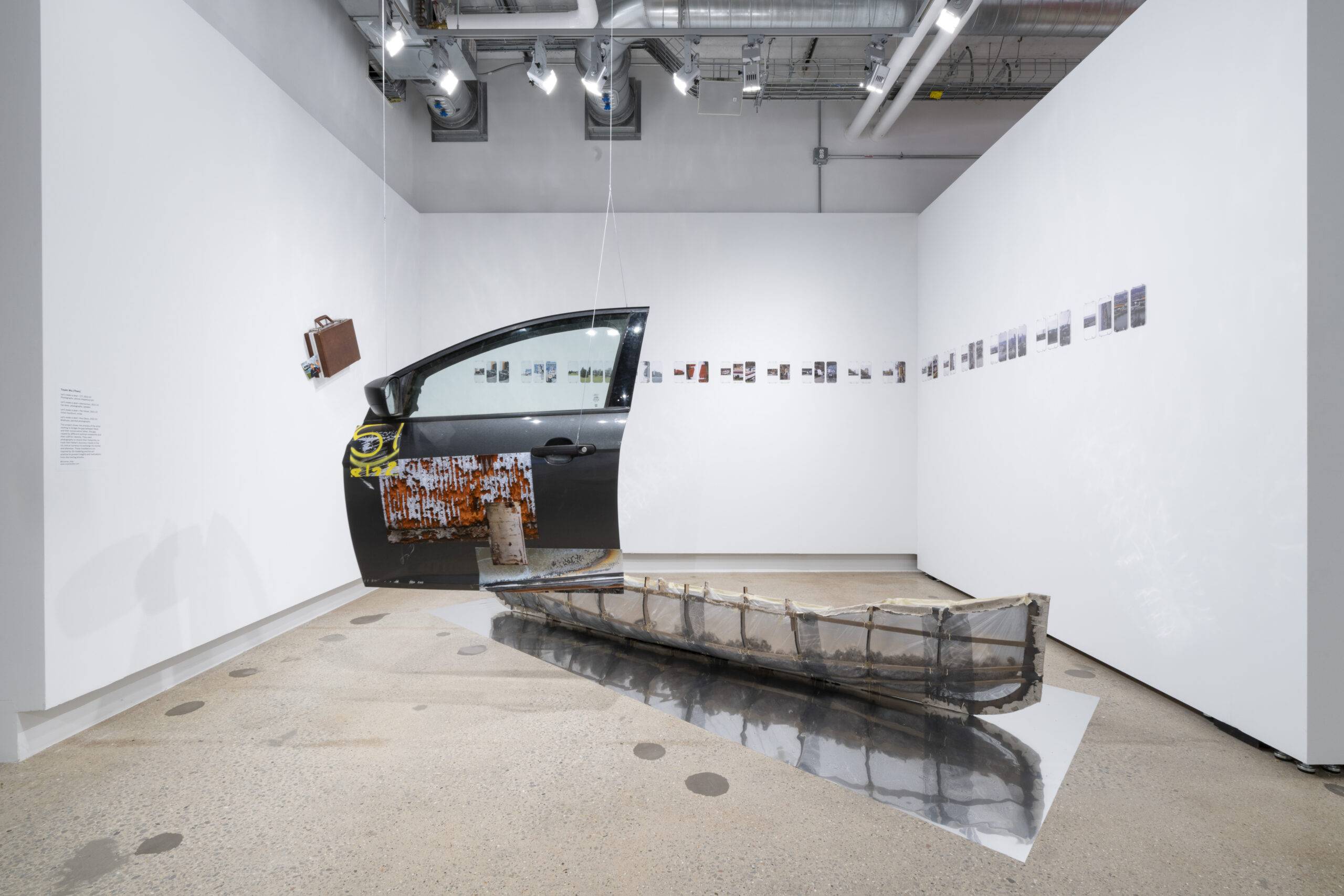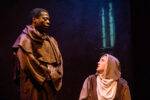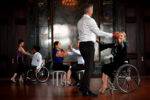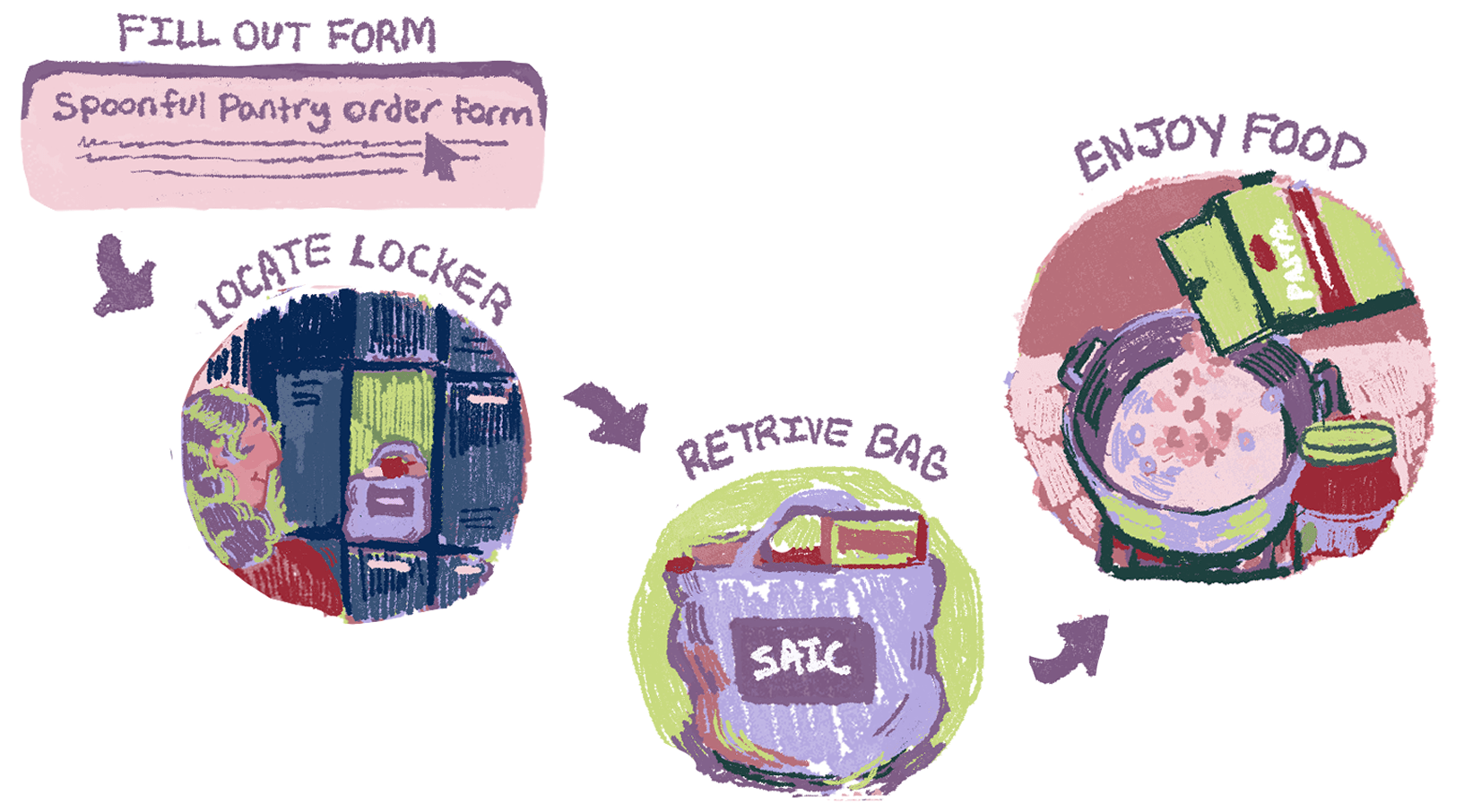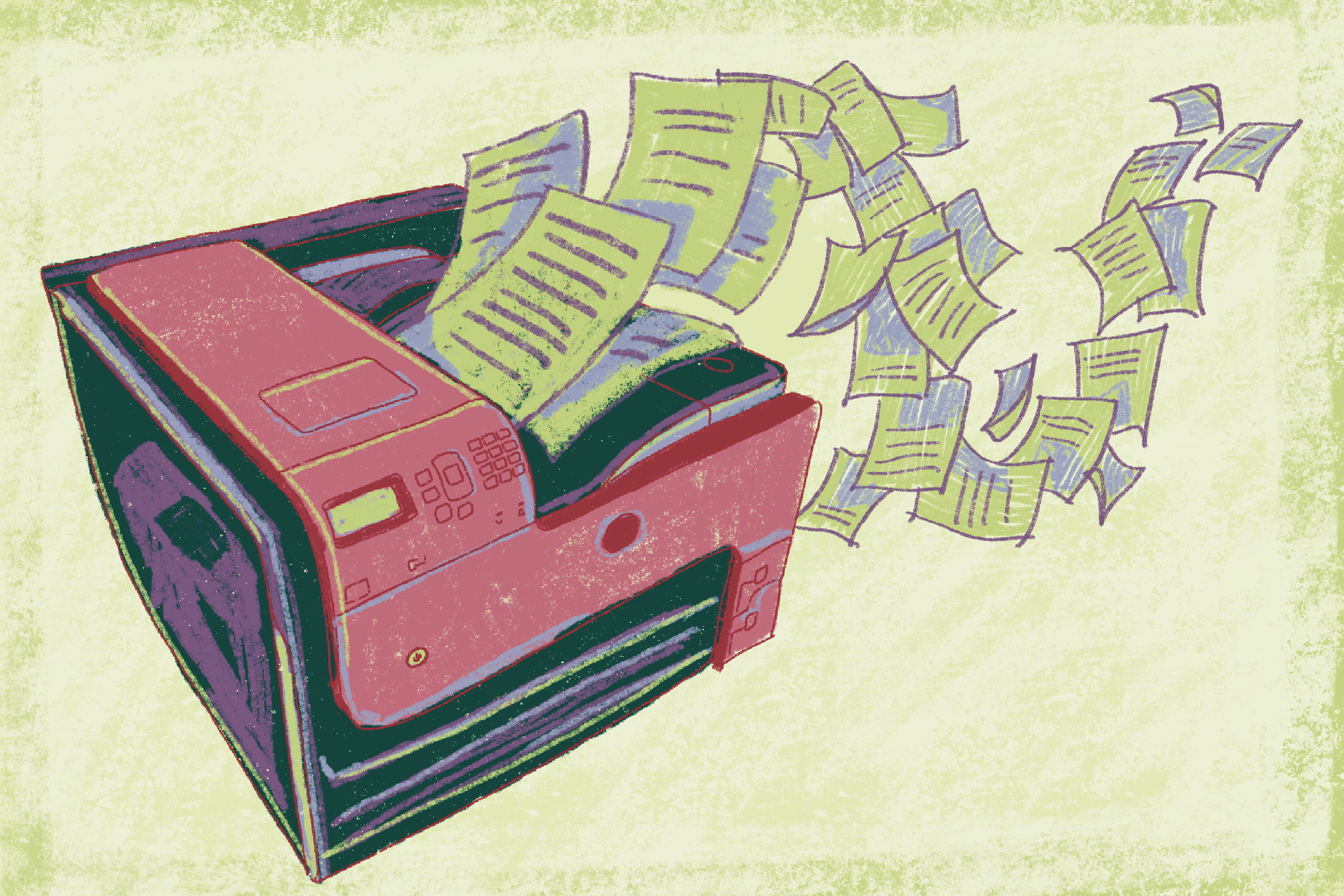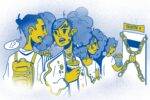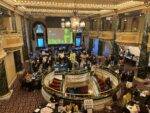Continuing the interdisciplinary trend at the School of Art Institute of Chicago (SAIC), Christian Sebastian Gutierrez (MFA Printmedia ’23), Cassidy Skillman (MFA Printmedia ’23), and Theo Wu (MFA Photography ’23) elevated their traditional training by creating installation arts for their graduate show. at the MFA Graduate Exhibition One 2023 from March 1 to 8, 2023 at SAIC galleries.
To understand their methodologies, Gordon Fung, the Arts Editor of the F Newsmagazine interviewed them about their practices, inspiration, and the rationale behind their creations.
GF: What inspires you to utilize scraps in your works?
CG: I like to use scraps in my work because there have been decisions placed on objects/things that I did not have to make. The color, shape, and size are like a puzzle game that I have to assemble satisfyingly so that they make sense. There is also a lot of play and intuition that comes with responding to found material, and I think it is important to follow those initial instincts.
GF: What is the rationale behind the involvement of kinetic in your works?
CG: Kinetics has become something I have recently been interested in after the desire to want objects to become activated. There is also a desire for the possibility to create sound, and recently, using motors and kinetics has been a great way to explore both realms. Another important aspect of kinetics is the potential for introducing chance as an active participant. There is a risk when chance enters the work, and personally, working with risk has been more interesting than creating a predetermined plan.
GF: Do you see your exploration of found objects and assemblage as an extension, continuation, or re-invention of the Rauschenbergian or Duchampian approach?
CG: I certainly draw a lot of inspiration from Rauschenberg and Duchamp, but I don’t necessarily think I am re-inventing or continuing their approach or ideas. Instead, I feel like they are both references and jumping-off points for works.
GF: As an interdisciplinary artist, how do you see yourself expanding your practice in the future?
CG: Currently, I am excited to continue with kinetics and moving objects, so I see myself expanding on a series of works exploring those qualities. Apart from that, there are other series that I think are also developing. It is hard to determine exactly what I will make in the future because curiosity can lead in many different directions. Throughout my time here at SAIC I have taken some classes in the Sound and ATS departments. These are both directions I definitely wish to explore a lot more.
GF: How do the physicality and reproducibility of printing inform your works?
CS: I use printmaking to display surreal ideas that are intertwined with current or historic events. Printmedia peaks interest for me because of its ability to be produced for the spread of information, communal collectivity, and justice, and for being a mode of mass production. I adore printmaking because it is communal-based, involves problem-solving, and requires critical thinking. The media additionally highlights a need to hone in on production methods to create consistent forms. But my admiration for these qualities within reproduction isn’t just limited to printed matter but multiples in general. Based on its availability, works of multiples have the potential to be readily shared in public circulation and can further create an accessible body of work that is transcendent of typical fine art.
GF: Lithographic photomontage prevails in your practice. What fascinates you with this idiom?
CS: The mediums I use (lithographic photomontage, reduction woodcut, etc.) are intentionally chosen. I like how surface-level interpretation and deep dive exploration oscillates between material and conceptual play. This project specifically needed to form a planographic and yet abundantly layered reflection on how we can construct new perceptions of deceptive timelines, through seamlessly montaging found photographs. Through this, I can simultaneously reduce private sectors down to their interests in capitalistic and materialistic consumption by chiseling the wood or examining history down to its warped core.
GF: “Not On View” poses a very interesting idea to obstruct viewers from seeing what is in the packed boxes. What is your rationale behind merging your prints with installation art?
CS: It was important to me that this project’s title had substances that pulled from standard institutional phrasing and archiving conditions. The concept was to transform us to the art vaults so the title and content needed to emphasize that. “Not On View” is a phrase used for works of art being held out of public rotation. It pushes the rhetoric that the institution holds power. Meaning that the agenda is not based on the viewer’s choice of what art is “On View.” I specifically placed prints in this installation for this media tends to take up a vast majority of the works on paper within an archive. Prints are predominant in storage because of the mass amount of work produced from editioned material. But further, there is a perceived idea that its expensive nature (made through the multiplication of physical forms) demotes its unique aura. I masked the prints to simply conceal the work from public view. This is in reflection of the obscurity of collections and investments as well as directly relates to the holdings of archived items. Covering works in this method are used to protect framed acquisitions within a vault system. When in art vaults (including the ones at the Art Institute of Chicago) you will see vertical wall mounts with boxes hanging over framed fine artworks. And my favorite part is that the only cue to what’s underneath is a denoted little Xerox thumbnail and collection label that is pasted to the box cover.
GF: What is the greatest takeaway during your study at SAIC?
CS: Support your friends, professors, and peers as well as AICWU because operating under an institutional system is complex.
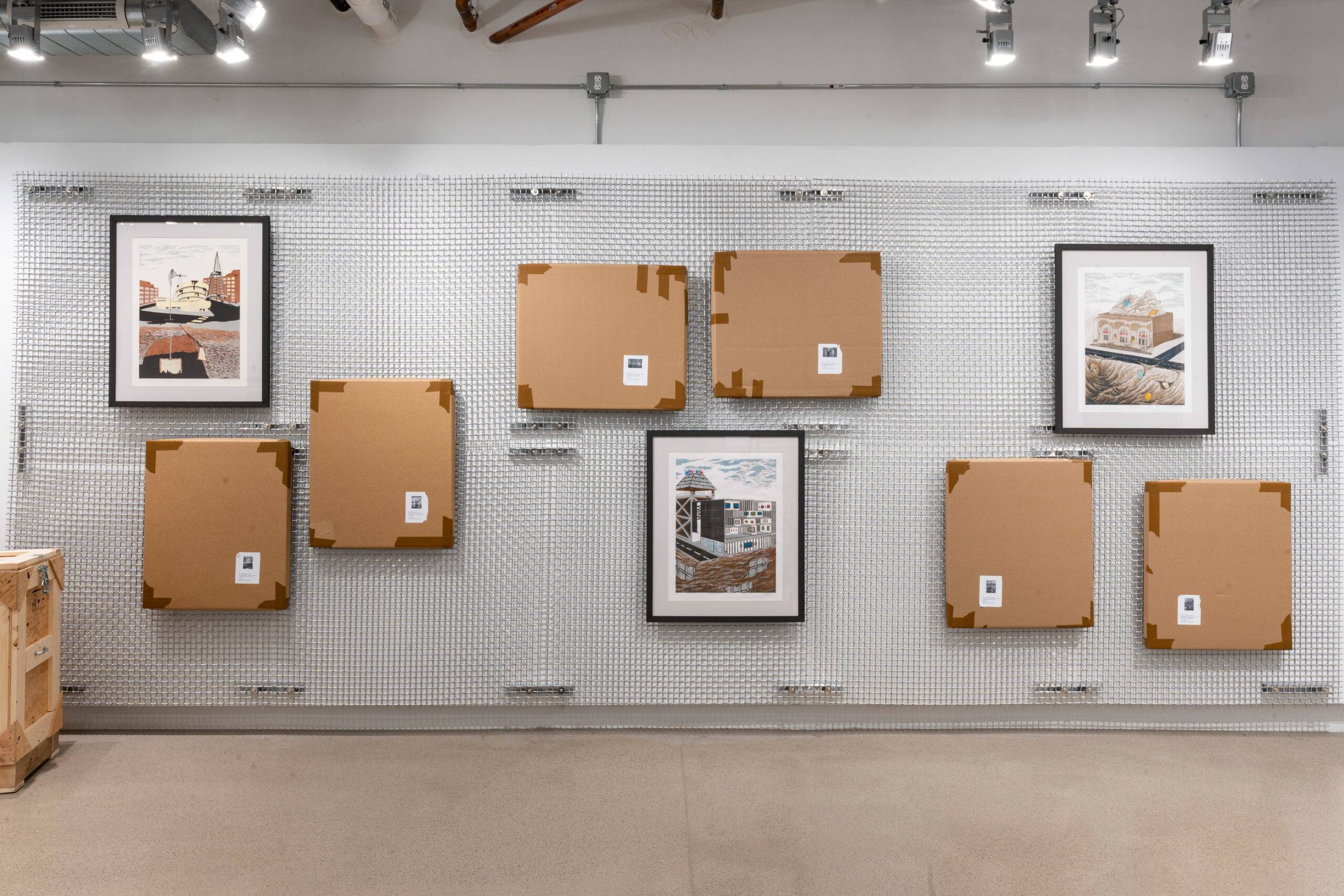
Installation image of ‘Not On View depicting the Closed For Restoration Project; Guggenheim, MoMA, and MET.” Photo by Eugene Tang.
GF: Your installation work features an unlikely combination of car door, boat, and smartphone, what do they signify as a whole?
TW: This is not the result of a strict plan. The idea gradually formed during the production process. Car doors, boats, and smartphones are essentially carriers. They carry people, goods, or information and eventually point to a gesture of reciprocation. These included objects become works, which carry my memories and opinions. I hope that viewers can resonate with my carrying objects/works. The car door related to the silent space and time my father and I shared in the car, and also me driving to those cities he had visited. The boat has a strong sense of body motion. It represents how cargos transport between countries. Smartphones are one of the easiest ways to commute with your loved ones overseas.
GF: Since you work across photography, technologies, performances, and video, how do you choose the current media as the best fit for an autobiographical reference?
TW: My practice is fairly comprehensive. I have been exploring and using the above media. I hope these techniques can become tools in my skill set, which can help me better convey my ideas, or at least have a base platform when communicating with professionals in these fields. With the accessibility to multiple tools, I gradually filtered out the media with my intuition during the creative process.
GF: Do you picture yourself mixing your practice and research interest more thoroughly in your next work?
TW: Yes, there is always room for improvement, and I hope my research and interest in technologies can rely on each other. I am also curious about where they will take me. For example, I did some research on animals’ eyes at the Field Museum of Natural History. I was there because it’s a local natural history museum, my work hasn’t linked it to local topics yet, but maybe it will one day. I shot footage of these and it ended up as a video work that was generated by styleGAN, a type of generative adversarial network. I trained the system with the photos I took in the museum and generated subsequent videos.
GF: What is the greatest takeaway during your study at SAIC?
TW: The greatest takeaways from SAIC are meeting friends who share common interests, and working and exploring together, and the second is receiving encouragement to explore freely with supportive rapport.
To revisit works from MFA Graduate Exhibition One 2023, check out https://sites.saic.edu/gradshow2023/filters/grad/

